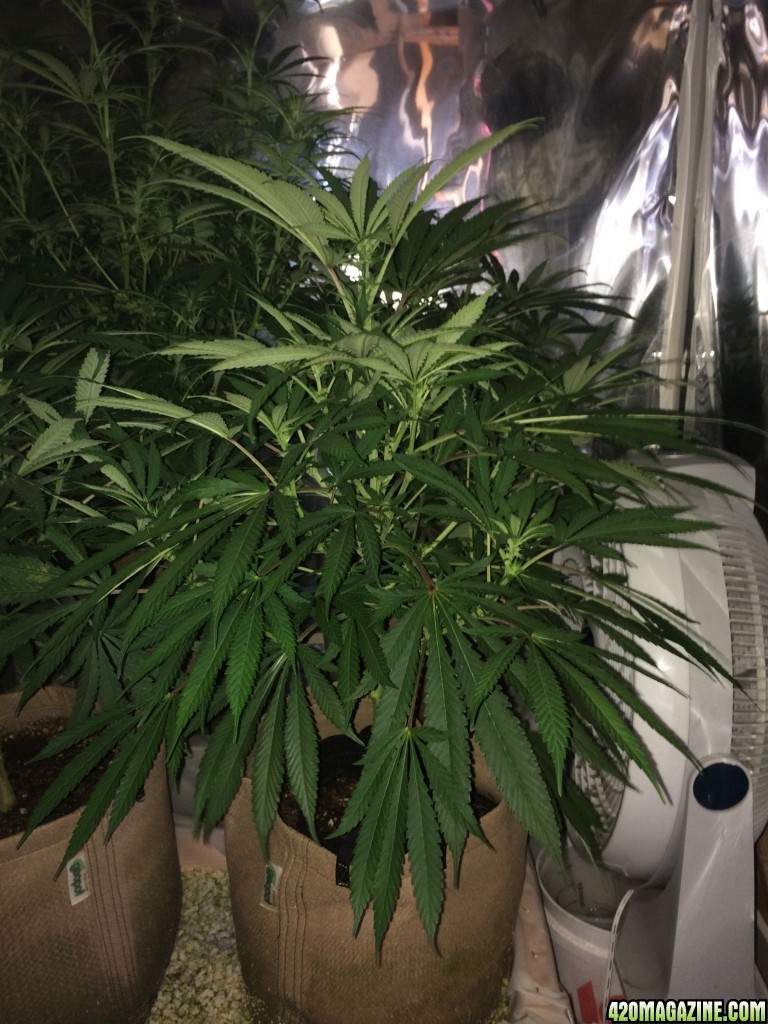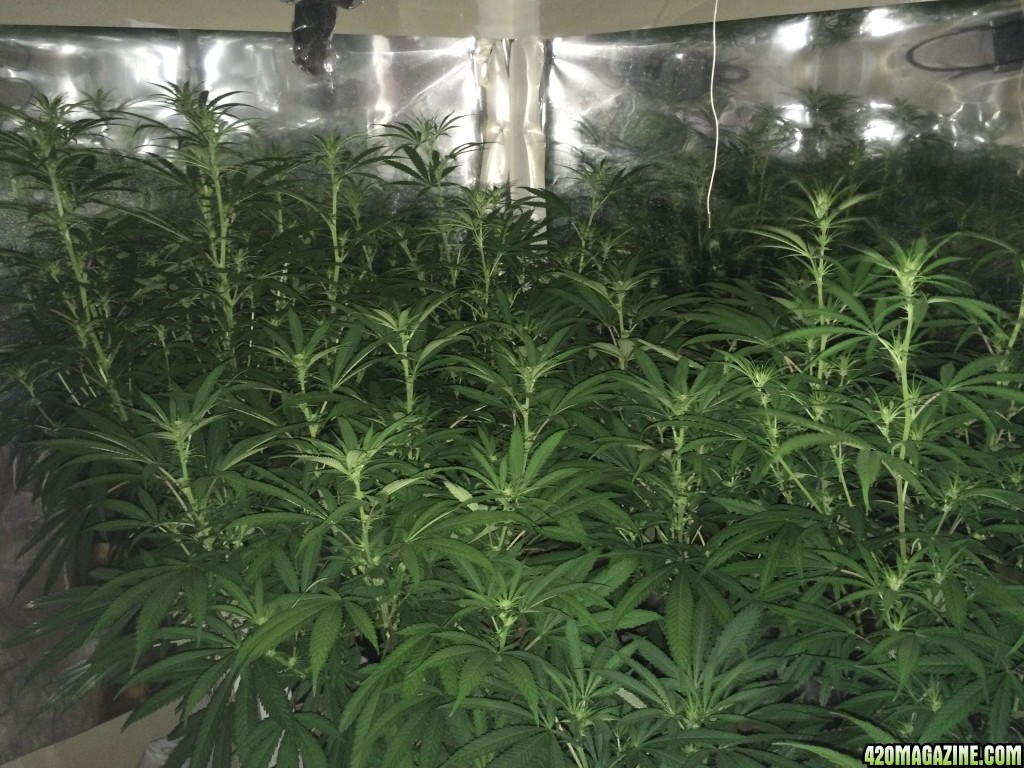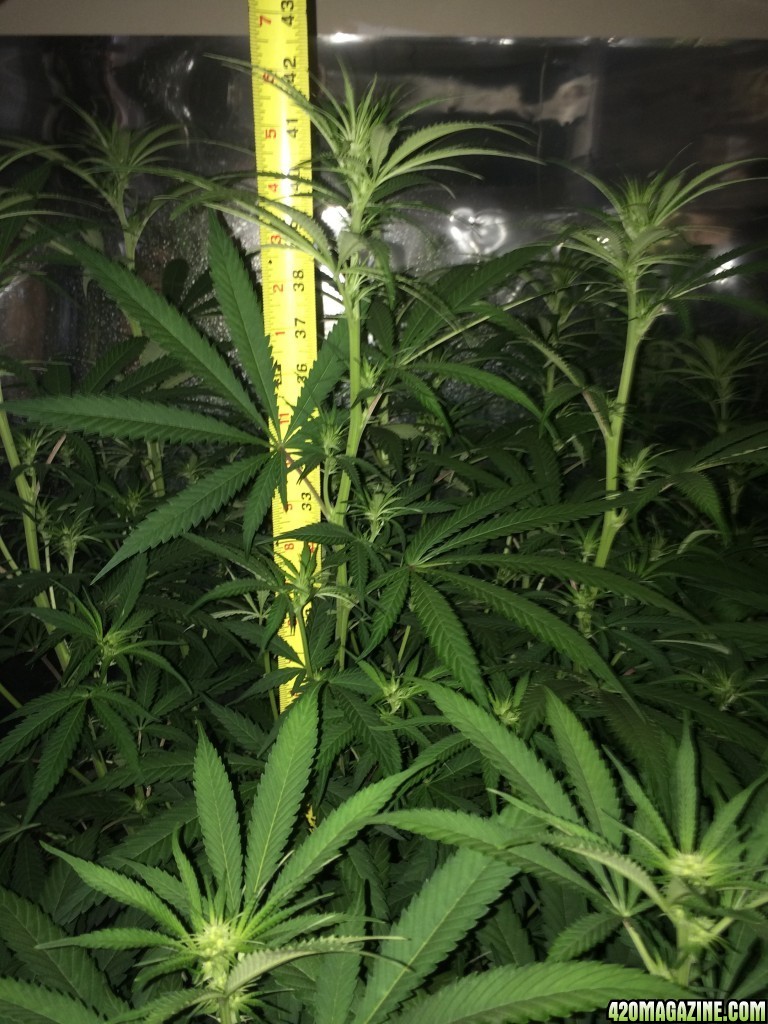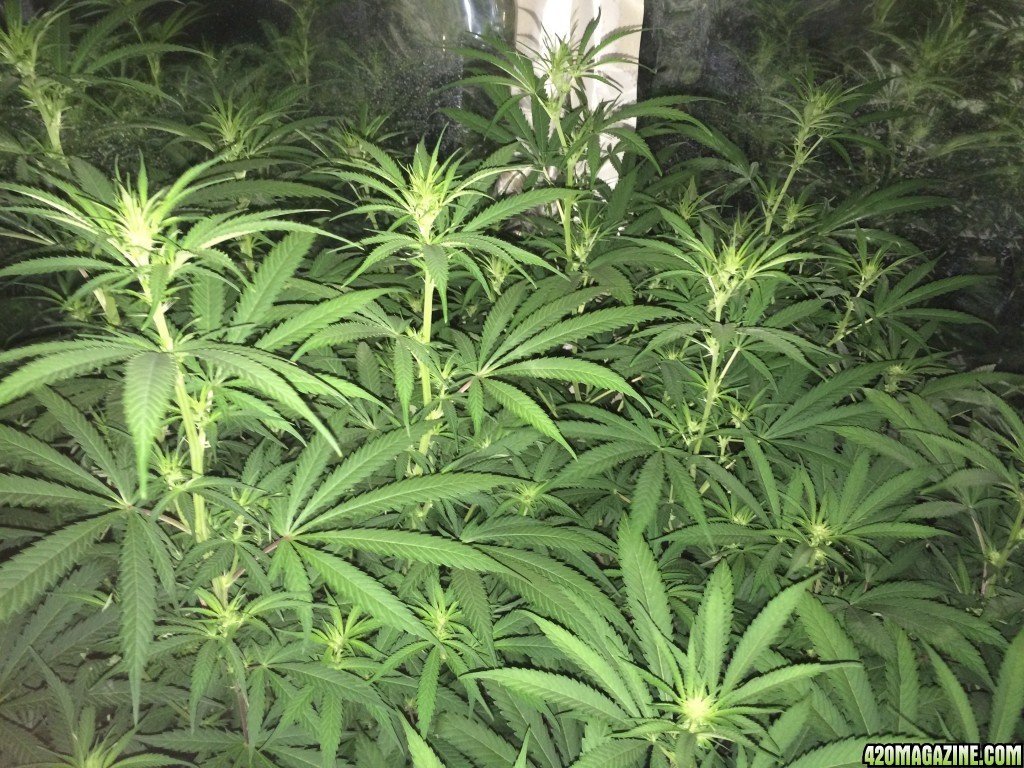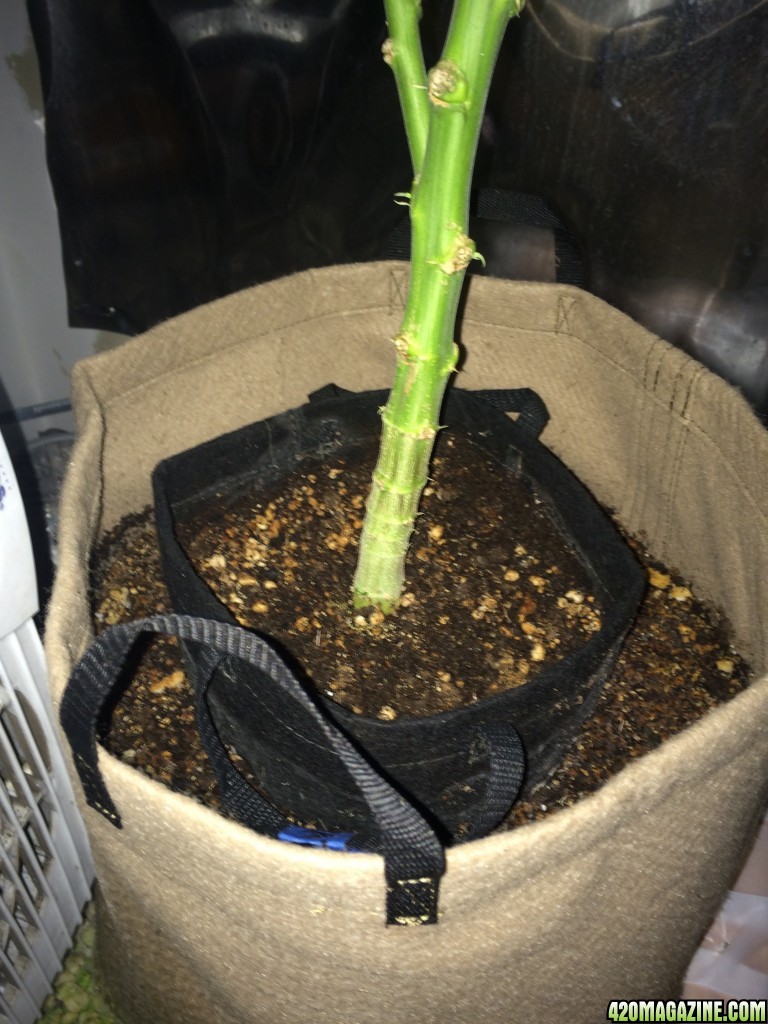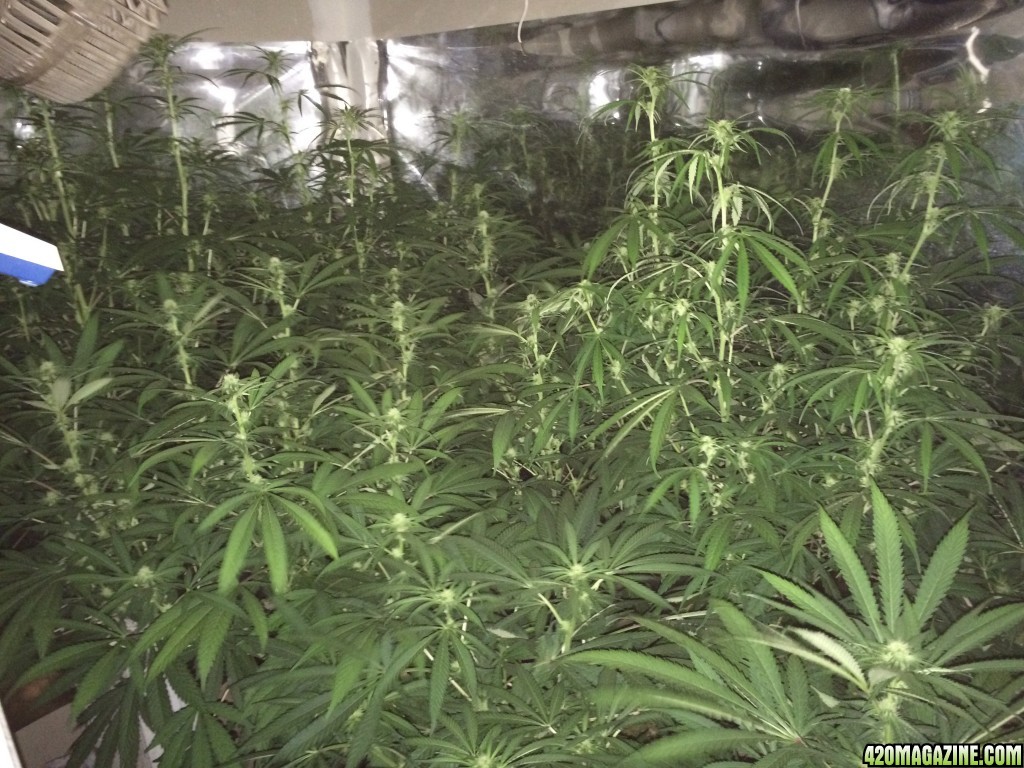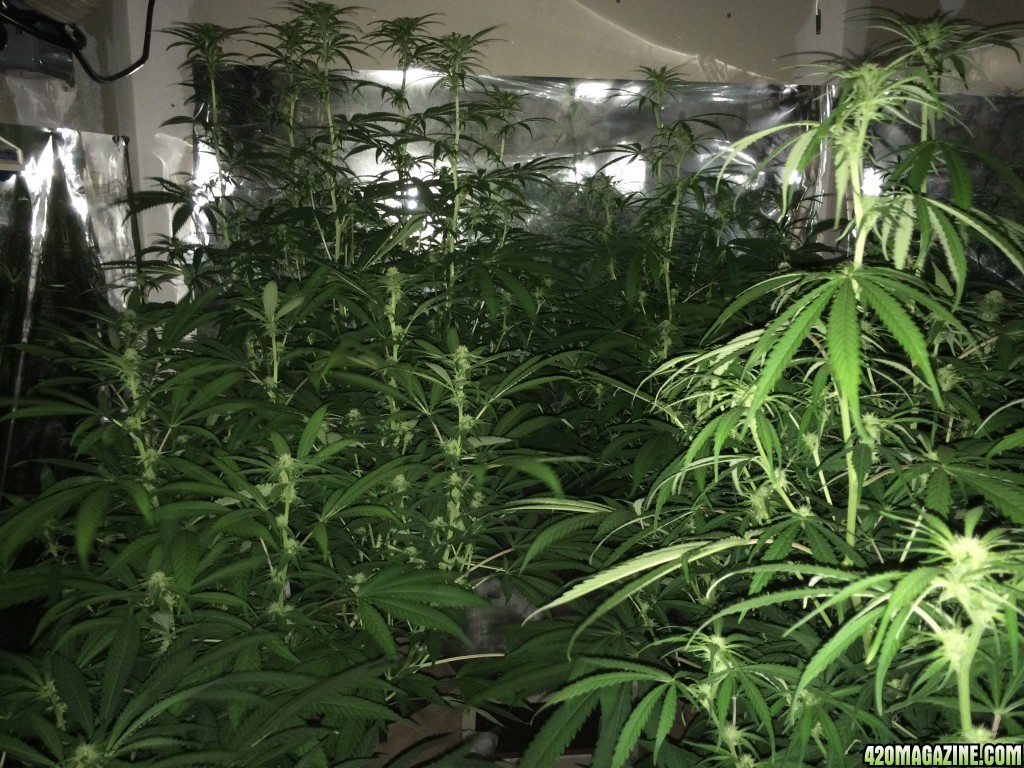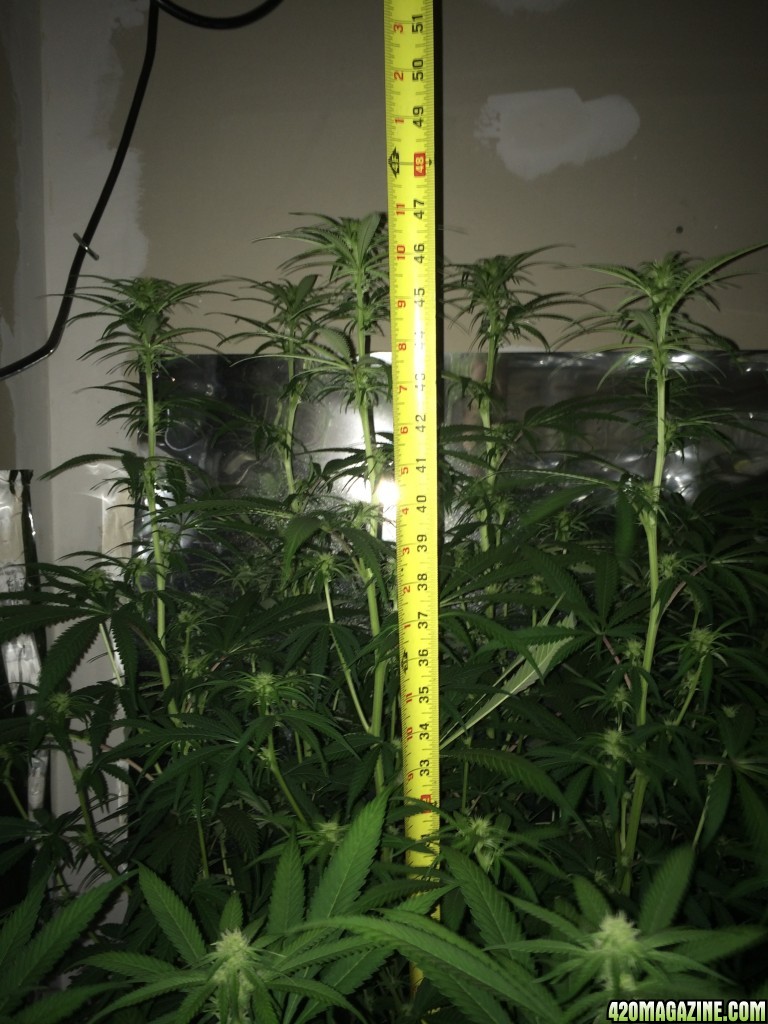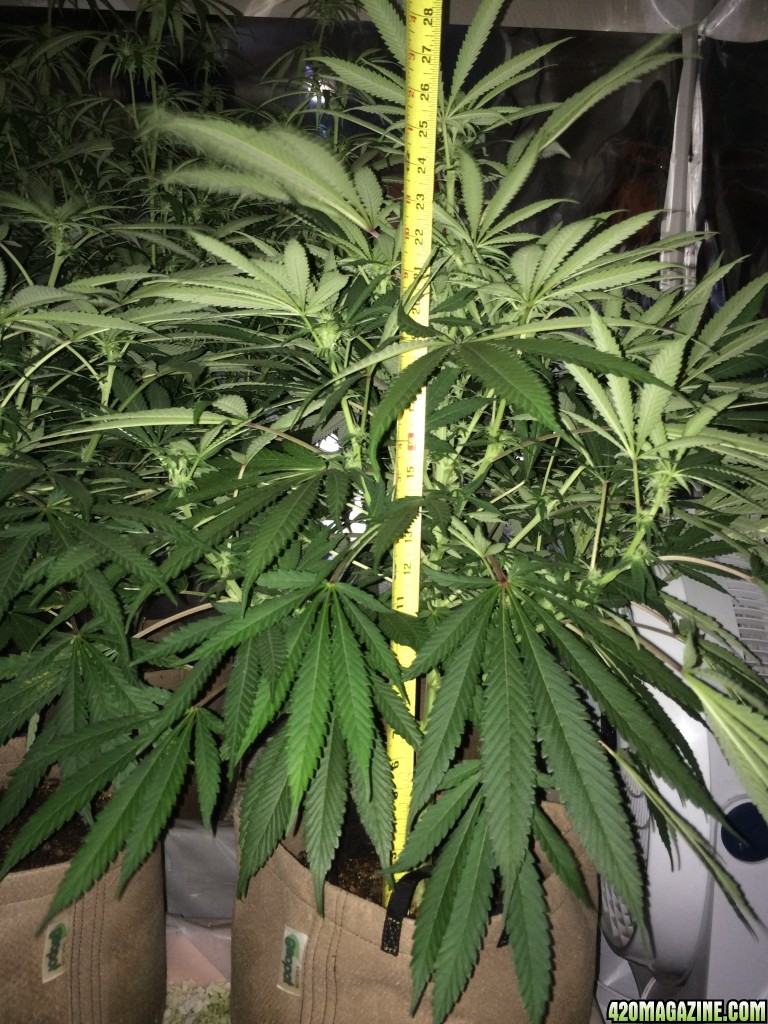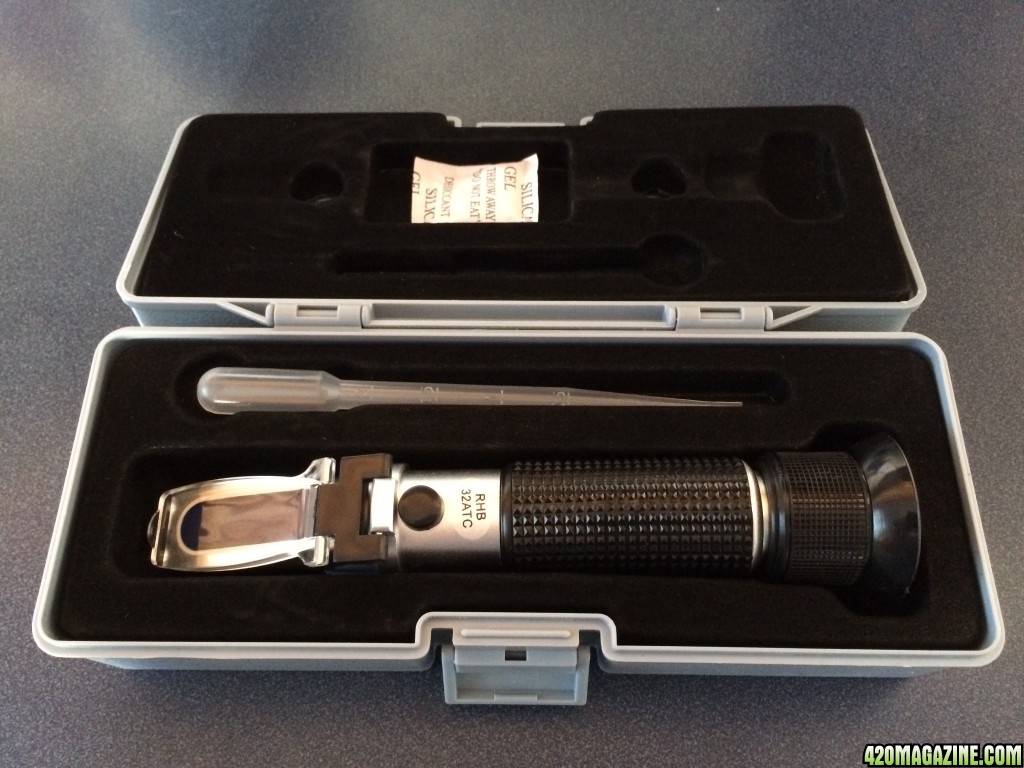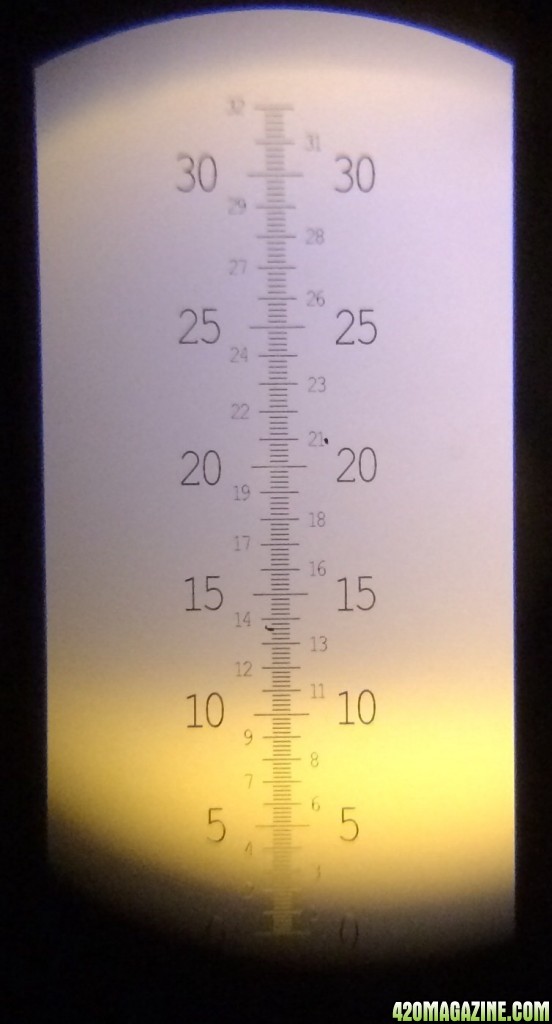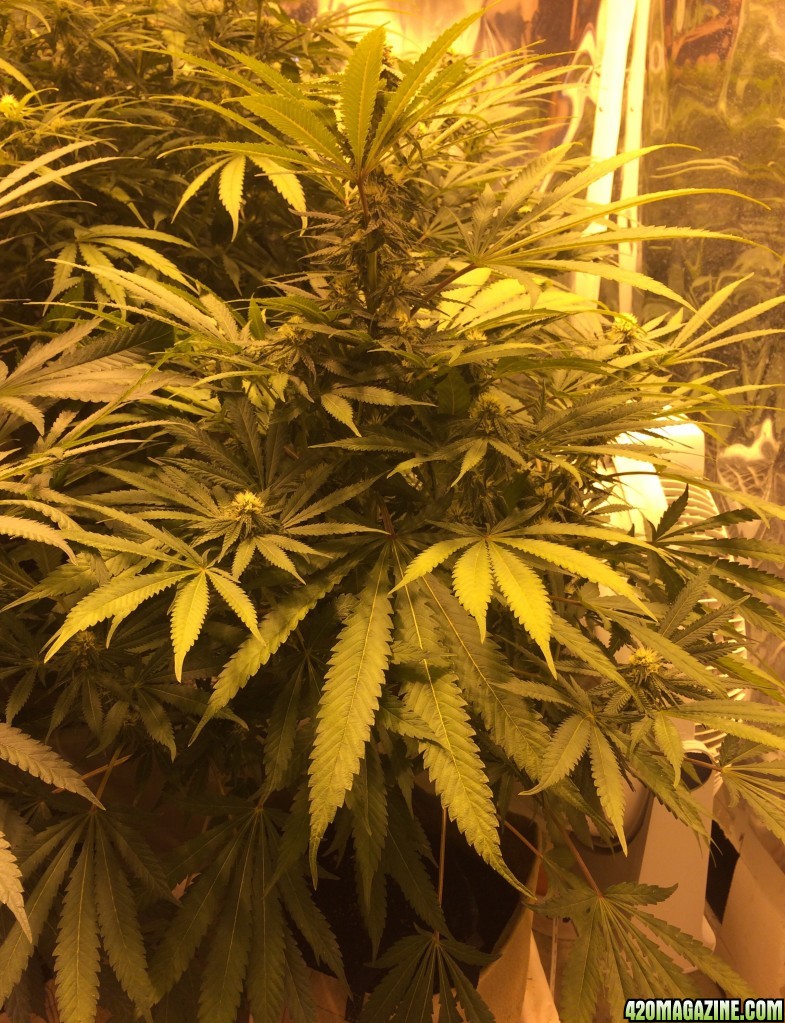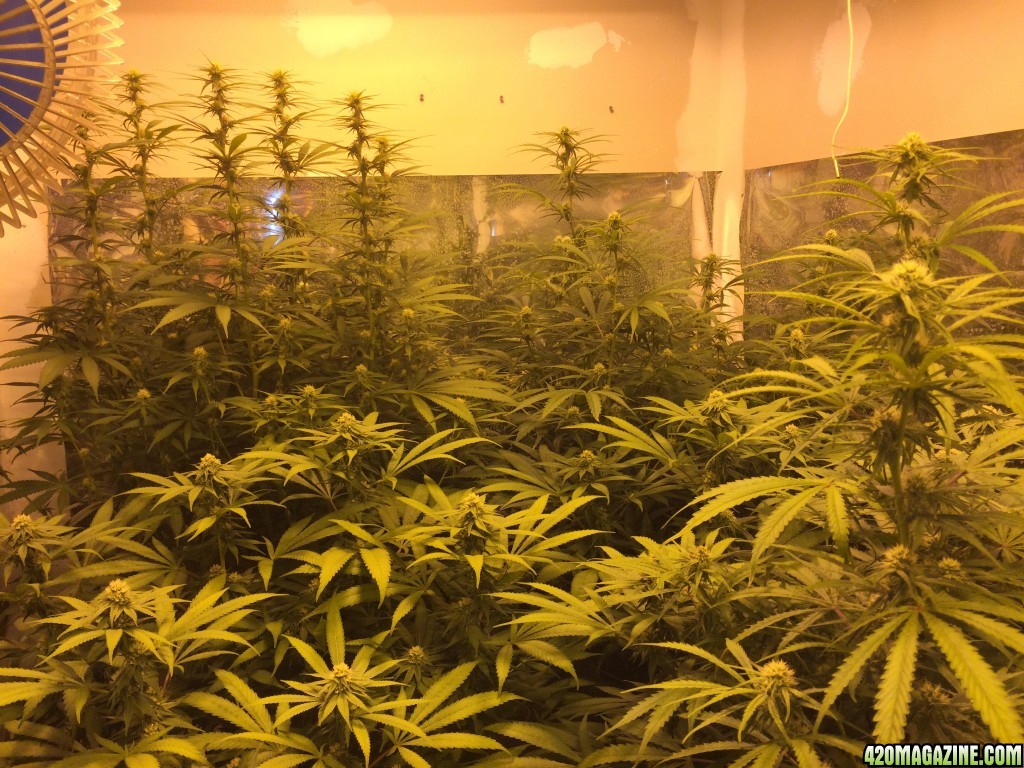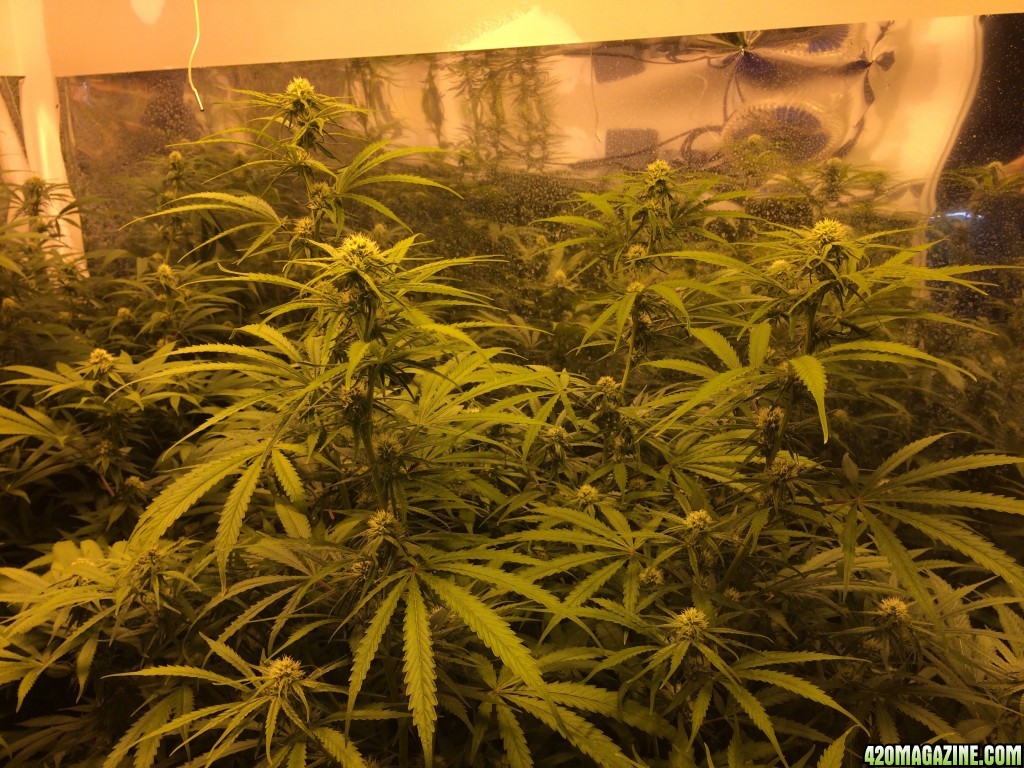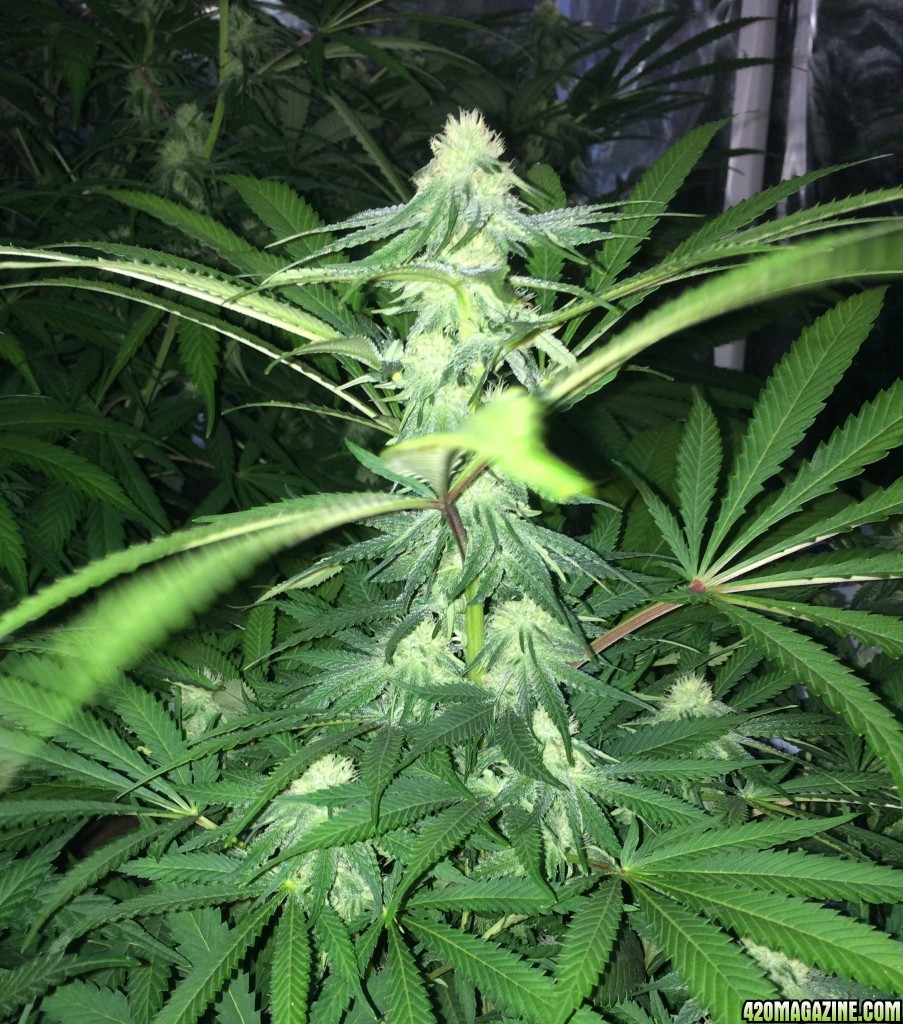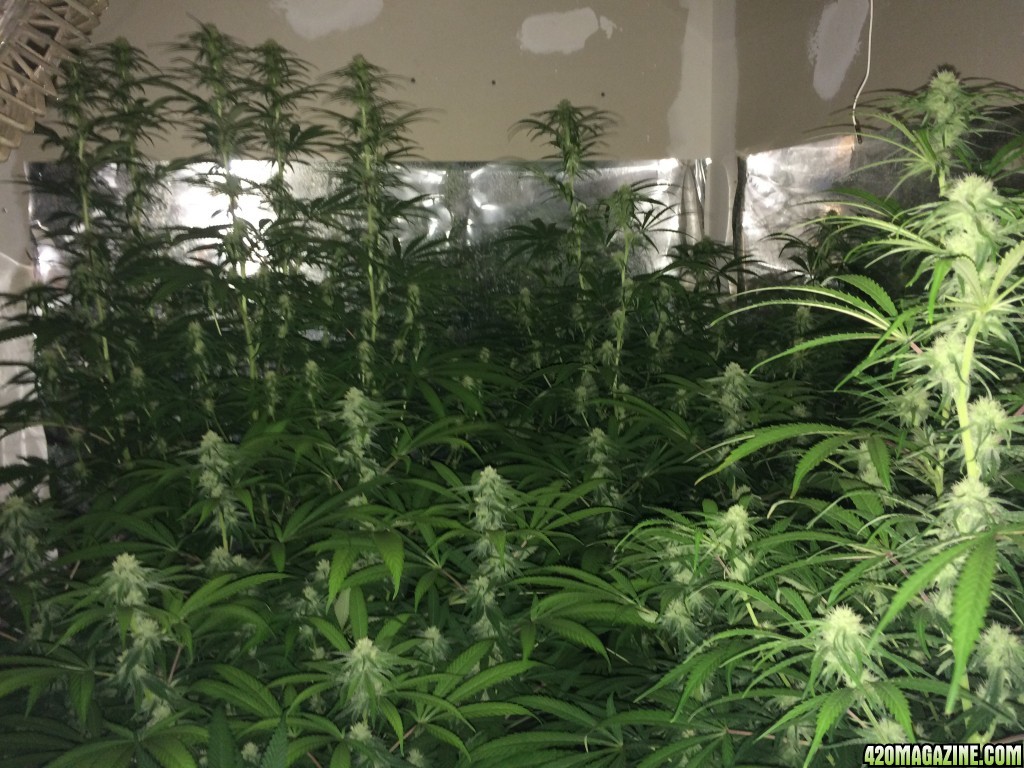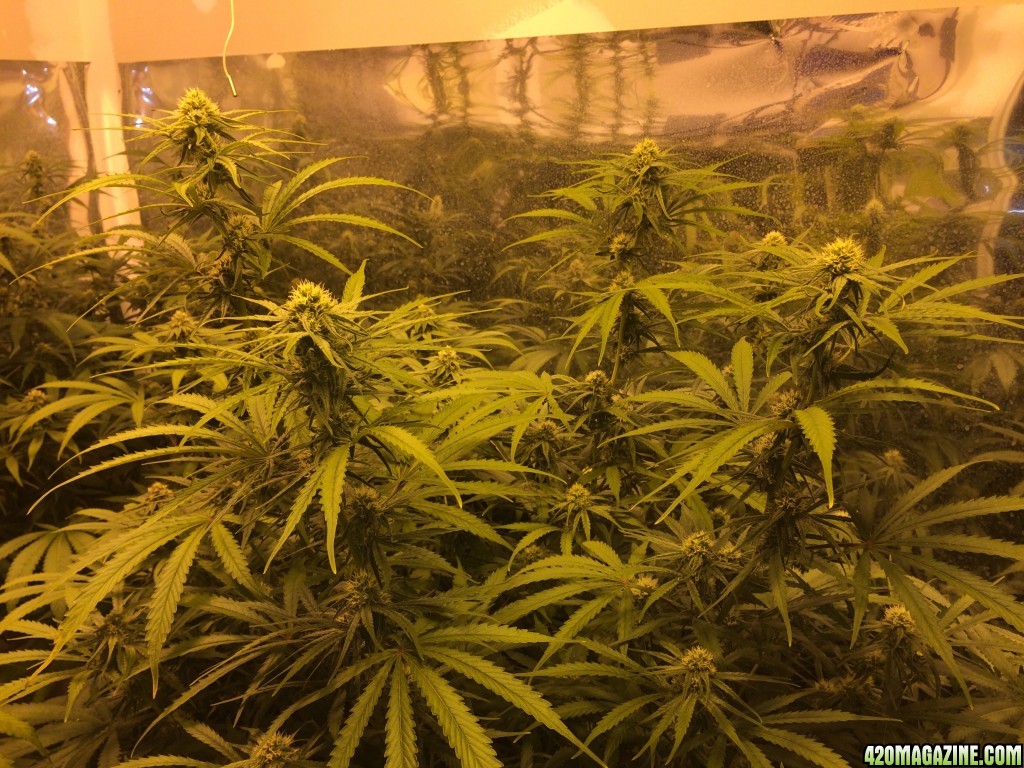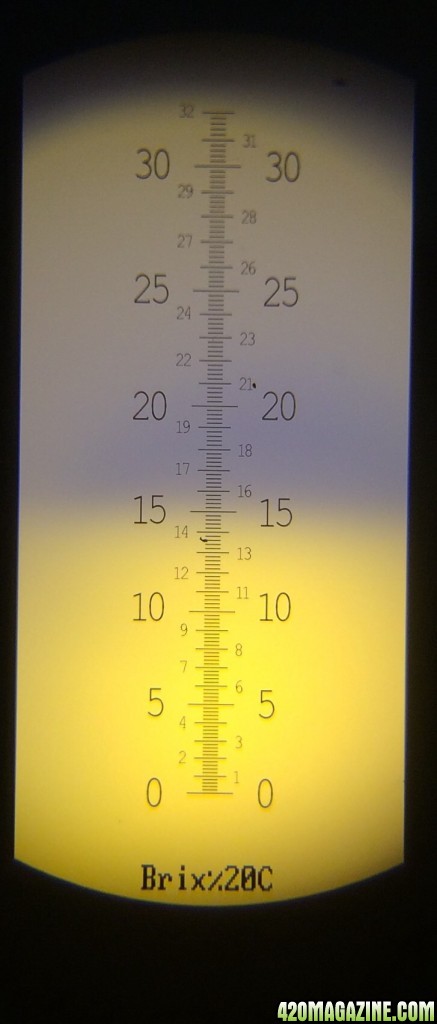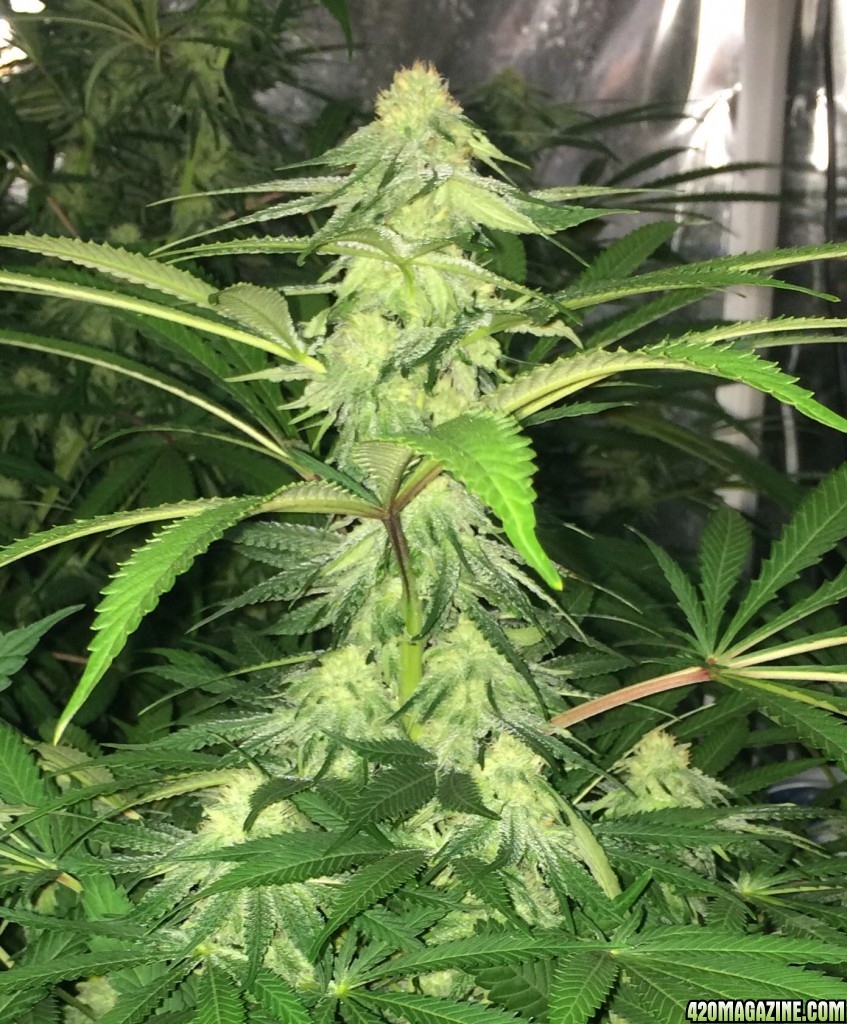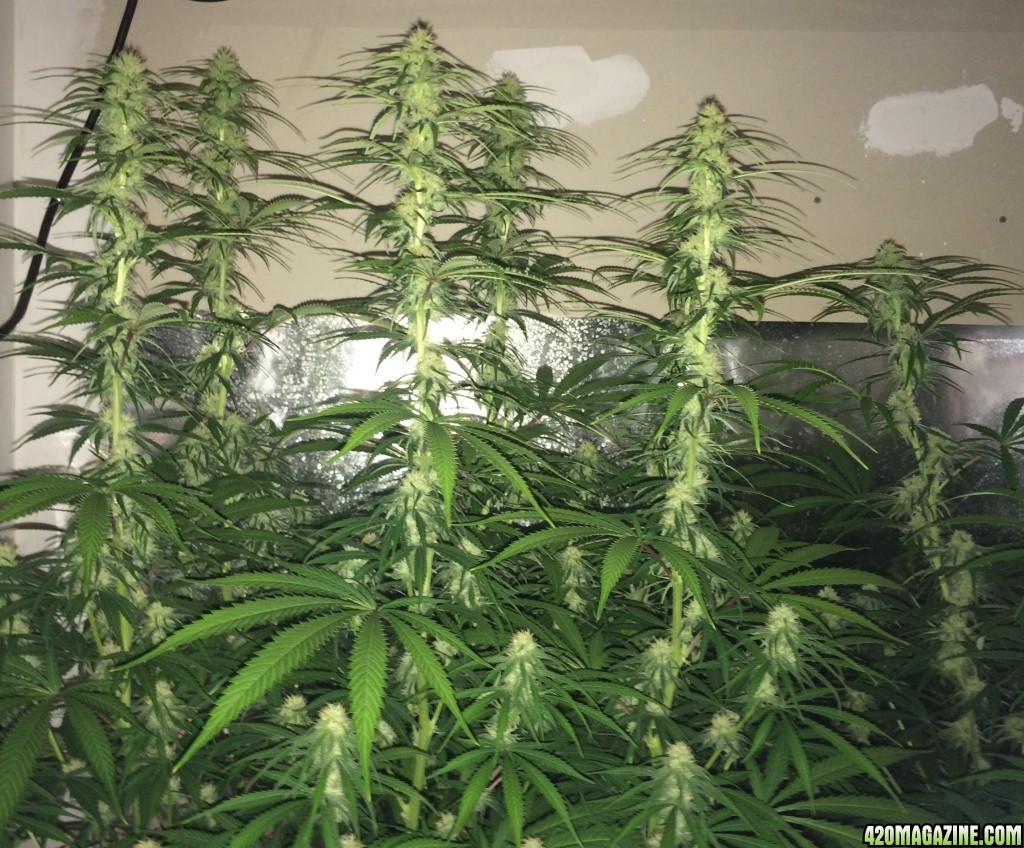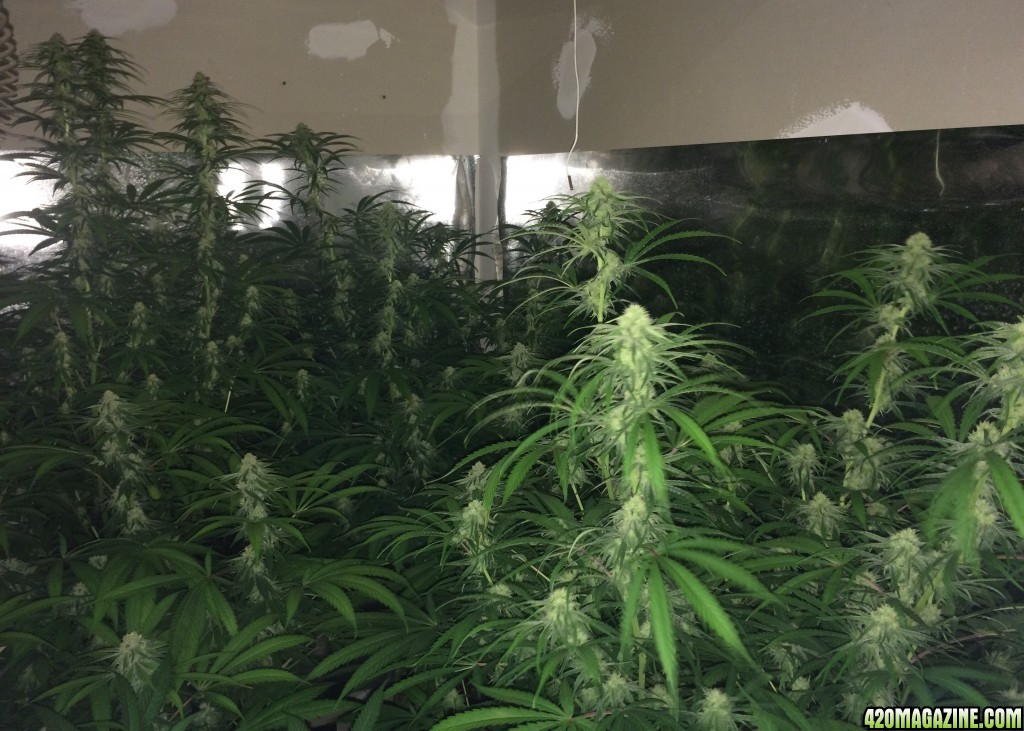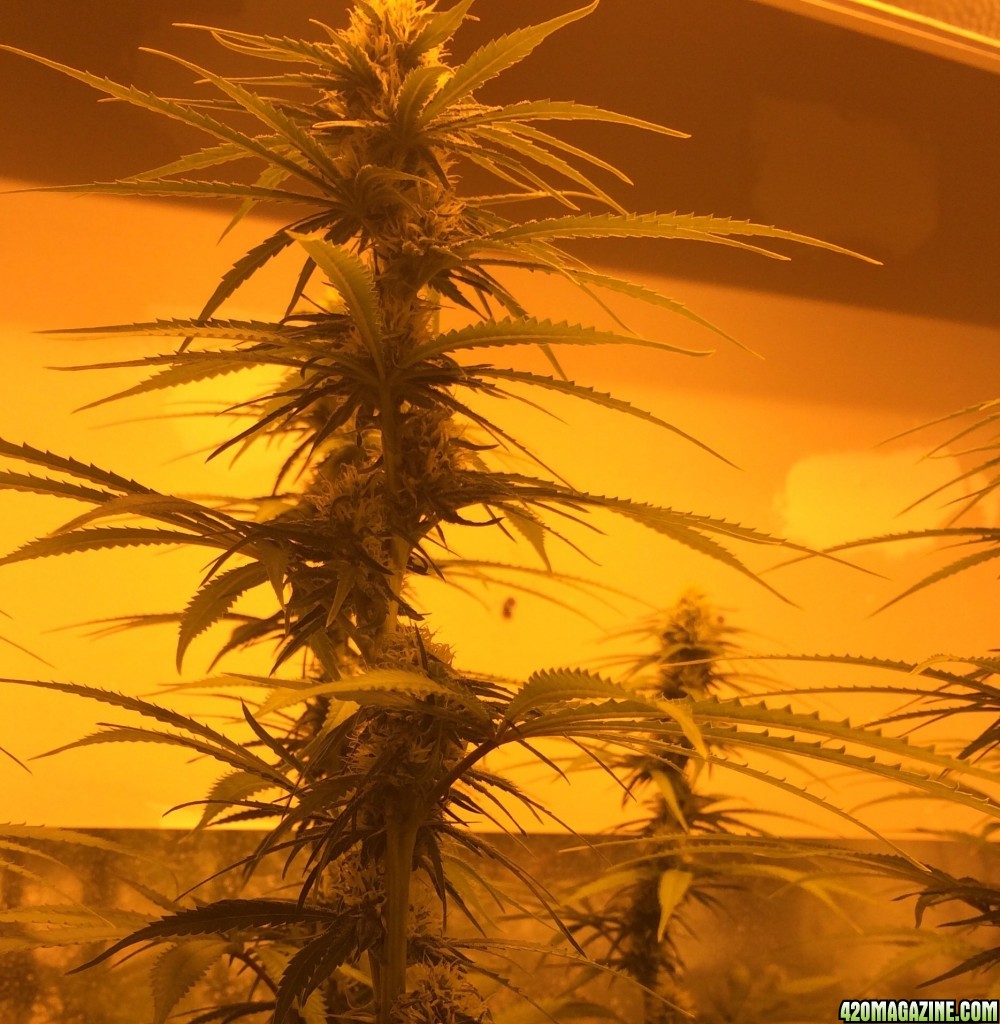DAY 19 FLOWER
Hey thanks chenzi!
Just got my refractometer in the mail. I am NOT using doc buds kit however I have been curious about my brix levels without it and the results are quite nice at 11 Brix!
the level is more distinguishable when viewed in person
For anyone who doesn't know:
When used on plant sap it is primarily a measure of the carbohydrate level in plant juices. The instrument used to obtain a brix reading is the refractometer. Refractometers come in two basic styles, optical and digital. Both types work great. Here is how a refractometer is used: squeeze out some sap from a plant, put 2 drops of the juice on the prism, close the prism cover, point to a light source, focus the eye piece, and read the measurement. The brix reading is indicated where the light and dark fields intersect.
What part of the plant is used for taking a brix reading? Whatever part you eat if it is ripe. If it is not ripe take the most recent mature leaves that have had full sunlight for at least 2 hours. Ideally measurements should be taken at the same time of day as you compare throughout the growing season.
A refractometer measures the amount of bend or refraction in the rays of light as they pass through the plant sap. This is why a brix chart is more properly called a Refractive Index of Crop Juices.
What causes light to refract as it passes through plant sap?
The amount of carbohydrates in the juice.
The amount of dissolved minerals in the plant sap.
The amount of covalent bonding.
High Brix Plants Are Insect And Disease Resistant, they have greater mineral density, make better tasting foods and have higher carbohydrate levels.
Insects and disease are the symptoms of a failing crop, not the cause of it. It’s not the overpowering invader we must fear but the weakened condition of the victim.
William Albrecht
